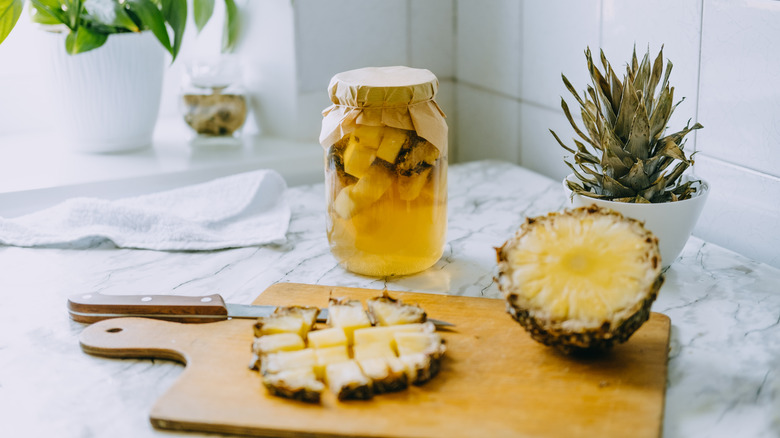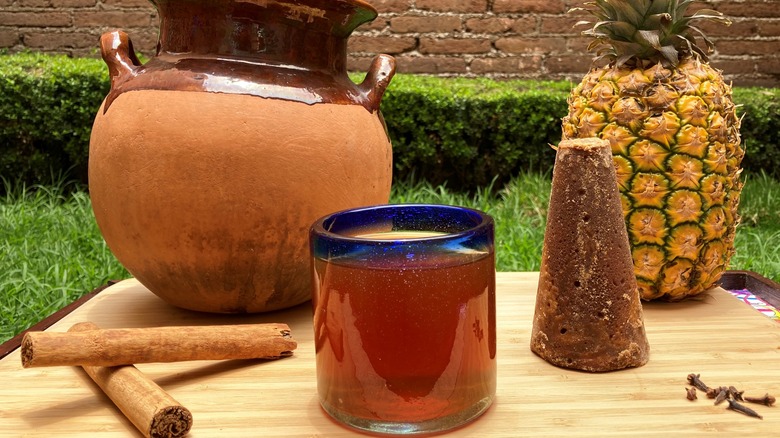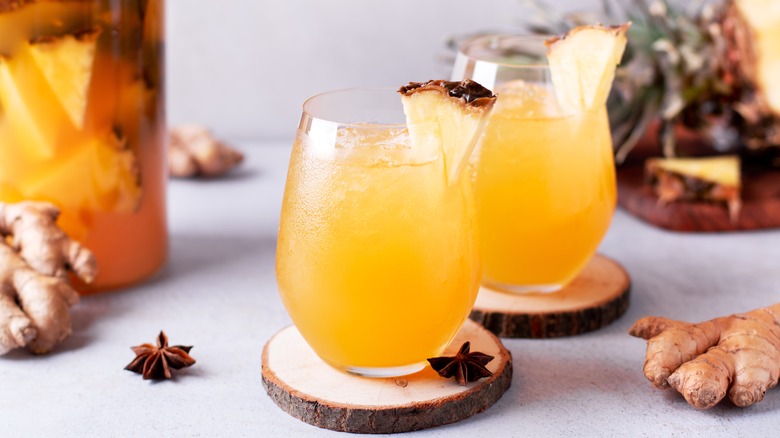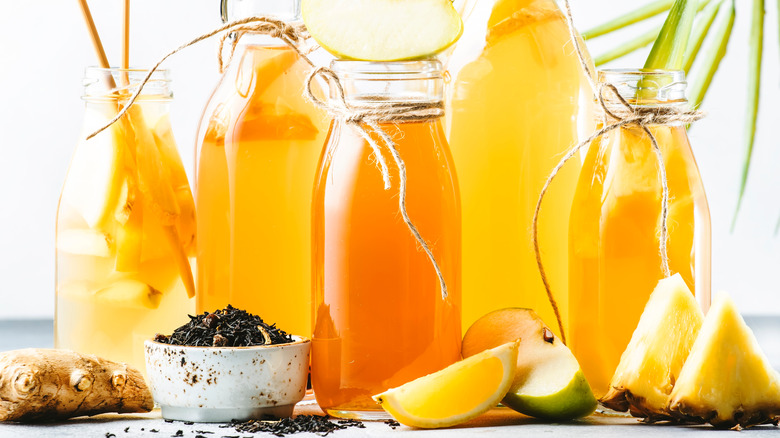Tepache: Mexico's Traditional Fermented Drink
First came kombucha, then came the drinkable vinegar and probiotic sodas. Many cannot seem to get enough of flavorful, sour beverages that purport to be good for their gut health. But the deeper we get into our collective fermentation obsession, carefully tending to our scobies and shopping for water kefir crystals online, the more obvious it becomes how old and stories these rich beverage traditions are.
One drink to join the health drink party is Tepache, which you may have seen spelled out in round, friendly lettering on matte millennial pink cans in your neighborhood grocery store courtesy of beverage innovator De La Calle. The fermented pineapple drink is sweet and sour on the first sip but develops a bitter funk the farther back it gets in your mouth. Depending on the flavor, the aftertaste is something like that of an off-brand Jolly Rancher.
But, you all want to know, what exactly is Tepache? Where did this bubbly beverage come from, and what makes it so unique?
The History of Tepache
Tepache might be the Whole Foods drink of choice, but it goes way back. It is an indigenous beverage native to Mexico and has been around since the pre-Colombian era. The Mayans would apparently use Tepache as a sacred drink, and it is part of a vast and largely undocumented culture of local fermentation practices that are highly regional and pretty much unknown outside of Mexico. Tepache began as a drink made from fermented corn, which is native to Central Mexico, but after the nation was colonized by the Spanish and new trade routes opened up, pineapple brought in from places like Paraguay and Brazil became common as a sweeter mash alternative to corn.
There are various theories about the origin of the drink's name, some of which include the Nahuatl word Tepiātl, which means "corn drink;" another Nahuatl word Tepachoa, which means "to grind;" and the Opata word Tepatzi, which means "place of beautiful women."
How is Tepache made?
One of the best things about Tepache is that it's a zero-food waste kind of project. The primary ingredients are pineapple peel and rinds, which contain natural yeast and bacteria that form on the skin of the tropical fruit. Water should first be brought to a simmer, and then you'll add piloncillo or panela and stir. Once brought to room temperature, the pineapple peels are mixed in, along with water and cinnamon. The vessel, typically glass, is covered with a paper towel or cheesecloth tied with a rubber band so that oxygen continues to flow, but bugs won't be attracted to the fermenting fruit.
Over the course of about three days (or longer in cool climates), the yeast and bacteria on the pineapple skin will consume the panela sugar, as well as the sugar in the pineapple, and produce lactic acid and CO2. This makes the drink naturally fizzy and tangy. Once finished fermenting, it should be poured into snap-top bottles and stored in the refrigerator so that the fermentation process slows to a crawl.
How is Tepache usually served?
In Mexico, Tepache is commonly sold ice cold in street markets called tianguis and by street vendors, served out of clay mugs or in a clear plastic bag with a straw dug into it. In the Southwest of the United States, it might be found in juice bars or traditional Mexican restaurants. But throughout the U.S., canned Tepache beverages have popped up in some grocery stores as a light refreshment to be enjoyed on the go as one might sip sparkling water or soda.
Tepache is often flavored with other regional ingredients like prickly pear, mango, and tamarind. It can also be served with a chili-lime Tajín rim. Many people prefer to spike it with tequila, mezcal, or white rum, to make for an easy cocktail with a complex flavor.
Because of its bubbly and acidic flavor, Tepache pairs really well with spicy foods like tacos al pastor or enchiladas. But it's also delicious alongside fresh fruit like pineapples, blood oranges, or clementines.
Is Tepache alcoholic?
Similar to other fermented beverages like kombucha or water kefir, homemade Tepache is lightly alcoholic ... but it's not enough to get you buzzed. When the yeast in the Tepache solution processes sugar, it releases CO2 and alcohol as byproducts, resulting in an ABV of approximately 0.5 to 2%. By comparison, most light beers fall between 3.5 to 5%. Commercially produced Tepache in the United States, like the brand's De La Calle and Big Easy, are required to come in at under 0.5% alcohol in order to be sold as non-alcoholic beverages.
Therefore, it is likely that these companies use the dealcoholization processes that kombucha companies have used for years to make sure their products are under the legal threshold. Homemade Tepache can be left to ferment a few days longer than necessary if you want to intentionally up the alcohol content, but it will turn to vinegar if left for more than 3 to 5 days.
Is Tepache good for you?
Touted as a healthy alternative to sodas loaded up with high fructose corn syrup and artificial flavors, Tepache has definitely been marketed as an all-natural beverage backed by generations of indigenous know-how. But this effervescent, sweet-sour drink is actually pretty good for you. The sweeteners used are unprocessed and unrefined, and much of the sugar in the drink is converted into byproducts over the course of the fermentation period, so it's not actually as sugary as DIY recipe photos might suggest. Because of the naturally occurring nutrients in the pineapple, Tepache contains vitamins C, A, B, and magnesium.
As Tepache is a fermented drink, it contains probiotics and healthy bacteria like Lactobacillus, which are good for digestion and overall gut health, similar to kombucha or products like kimchi and sauerkraut. So if you're wanting to wake up your taste buds and possibly do your gut some good, Tepache may be a go-to drink.





